The Ultimate Guide to Pet Enrichment: Creating a Life of Joy for Your Animals
As an Amazon Associate, I earn from qualifying purchases. We may receive a commission for purchases made through these links. This site also contains affiliate links to products besides Amazon, like Etsy. We may receive a commission for purchases made through those links too (at no additional cost to you).
What is Animal Enrichment?
When people think of animal enrichment, they typically think of tigers or otters at the zoo getting toys like balls or barrels. Now toys are a type of pet enrichment, but it’s so much more than that. The American Zoological Association defines enrichment as “A process to ensure that the behavioral and physical needs of an animal are being met by providing opportunities for species-appropriate behaviors and choices.” Basically, this means that you provide something that the animal does not get every day that also encourages its natural behavior. By doing this, you will be improving their quality of life by meeting some of their basic needs.
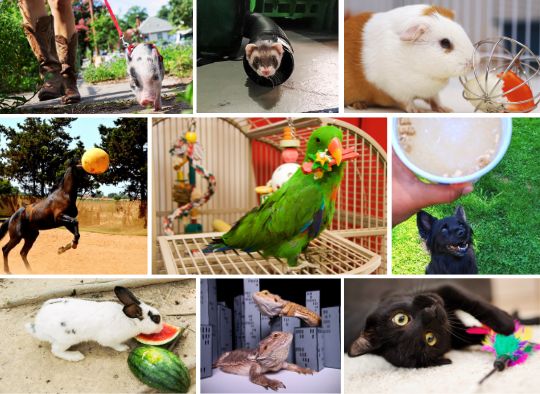
Why is Animal Enrichment Important?
Enrichment is meant to ENRICH or improve the lives of animals. Think of all the enrichment we humans have access to. We have TV, books, and games. We try new foods, visit new places, and meet new people. If we didn’t have any of these things, our lives would be very dull.

What Types of Animals Need Enrichment?
In the past, it was thought that only the more intelligent mammals like gorillas, elephants, and dolphins required enrichment. However, as more research on animals in captivity is completed, it’s become widely known that keeping ALL animals mentally and physically stimulated is crucial to their quality of life. Most zoos now require that every animal in their care receive some type of enrichment at least several times a week. For certain species, they aim for as many as two to three times a day.
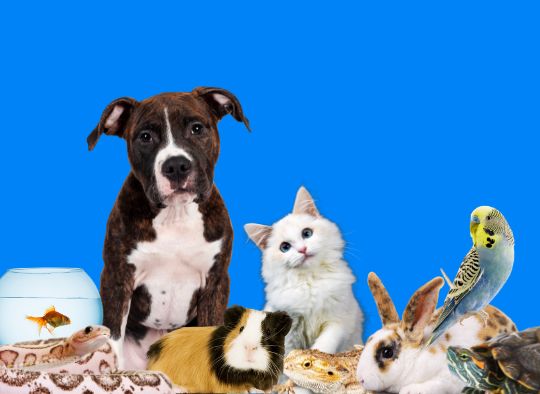
How Often Should I Give My Pet Enrichment?
How often you should give your pet enrichment will depend on their species, energy level, and personality. Animals like snakes will need less enrichment than a high-energy dog. A pet that has excess energy and suffers from anxiety will need more enrichment than a pet that prefers to sleep all day. Generally, I would aim for at least once a day for mammals and birds (preferably more), and three times a week for reptiles and fish. You can always adjust this depending on your schedule and what your pet seems to benefit the most from.
What Happens If Animals Don’t Get Enrichment?
When animals don’t get enrichment, it can lead to both behavioral and medical issues. This is because a lack of mental and physical stimulation can quickly lead to boredom, anxiety, and depression. Our pets will try to find a way to keep themselves occupied when possible.
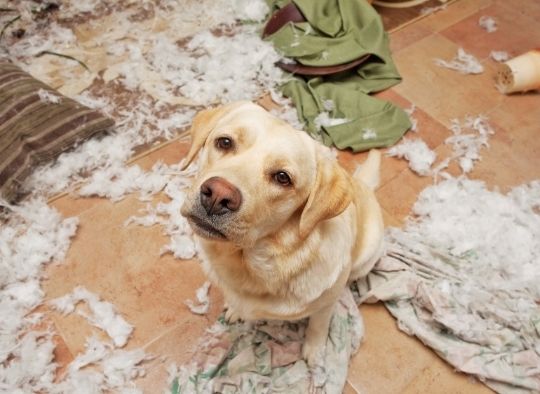
If animals don’t have a proper outlet for their pent-up energy, they can end up developing destructive habits or start to become anxious and depressed. Just like humans, anxiety, and depression can lead to numerous other health and medical issues. Animals like dogs might start destroying things in your home with no regard for their own safety, whereas birds may end up overgrooming and plucking out their own feathers.
Now that we have learned how important regular pet enrichment is to keep our animals happy and healthy, let’s explore all the different types of enrichment that are possible.
What Type of Enrichment Should My Pet Have?
Ideally, enrichment should be designed to encourage your pet’s natural behaviors. This means that the item or activity will help your animal to do things that they would normally do if they were in the wild. Cats have a high prey drive and hunt frequently in the wild. This is why teaser or chaser toys are so popular with them.
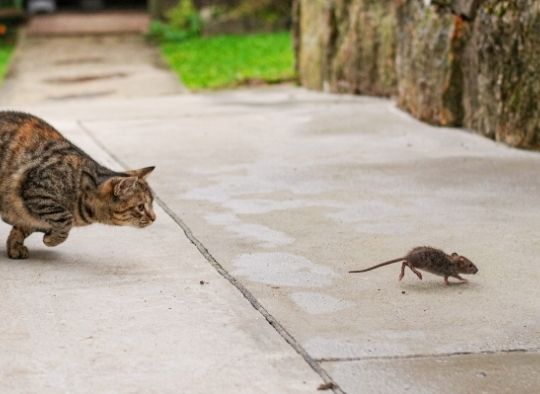
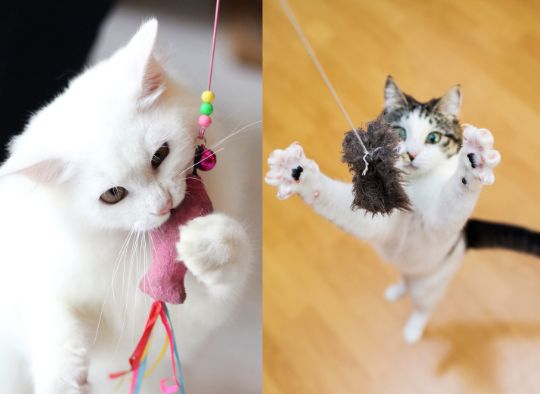
This can be something that will address any of their 5 senses or that provides mental or social stimulation. If you are stumped and need help finding enrichment ideas that would be the most beneficial for your pet, there are a few things you can do.
Take the time to research your pet’s species/breed. You can also watch to see what types of behaviors they do on their own and which of their 5 senses they rely most on. It can be fun and fascinating to make the connection between what you have learned and the traits that you’ve seen your own animal exhibit.
An example of this is with dogs. Some smaller dogs like dachshunds were bred to flush out burrow-dwelling animals like badgers. Today, many of them still like to crawl into blankets and tightly covered spaces for enjoyment. Beagles were also hunting dogs and today their noses tend to get them into trouble!
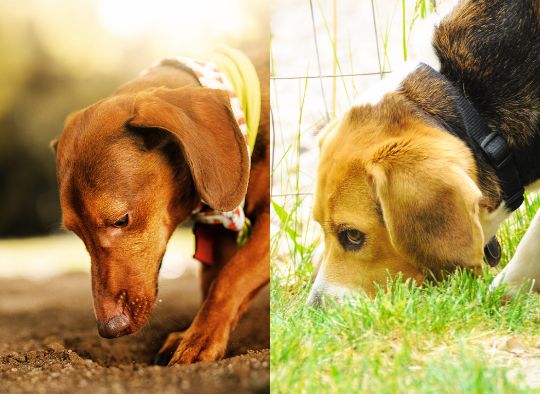
For more inspiration on different types of pet enrichment that you could provide to your animal, you can also search Pinterest or take a trip to the zoo to see what they are giving their animals that are like yours. Let’s say you have a house cat, you could go take a look at what the lions and tigers are getting and think of ways you can modify it for your pet at home.

What are the 3 Main Types of Animal Enrichment?
Pet enrichment can fall into 3 main categories: sensory, mental, and social. Each of these types can be broken down even further into subcategories. Your chosen method of enrichment can and often will fit into more than one of these types.
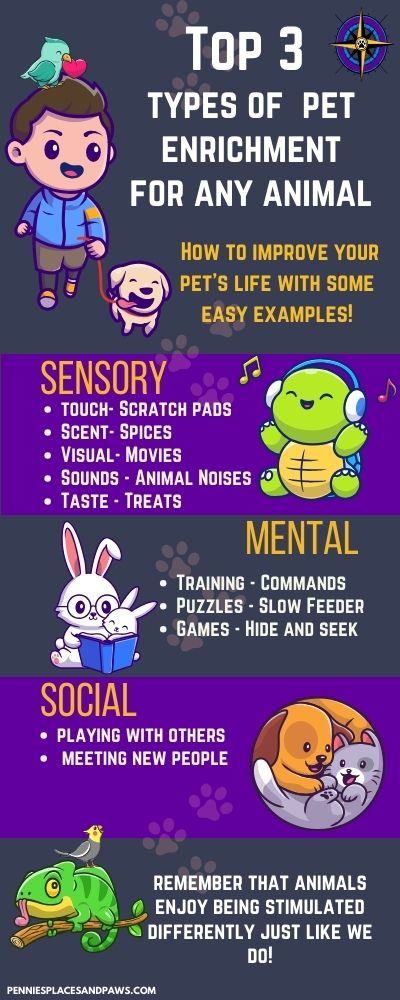
When selecting your pet enrichment, you will want to make sure that you are cycling through all three of these main categories to fully address your animal’s needs. Remember, it’s only enriching if they don’t get it every day! To help you start thinking of ways that you can provide the best selection of enrichment for your household, we’ll break down each of these categories and give examples of what you could do for your pet.
Sensory Enrichment
Sensory enrichment is something that encourages your animal to use at least one of their 5 senses; sight, smell, sound, taste, or touch. You will want to think about which one your pet uses the most and focus more on providing enrichment in that area. Even though your pet will have preferences in the way they are enriched, you should still try to cycle through most of the 5 senses to keep them fully stimulated.
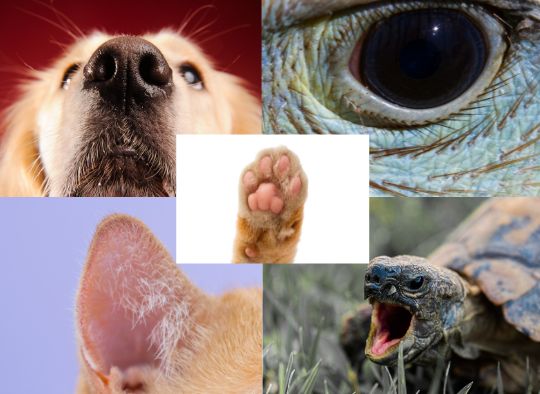
Visual Enrichment
Visual enrichment can be anything that catches their eye. This could be as easy as putting on the TV. There are multiple apps and shows that exist and are created specifically for animals. There are several channels made for dogs, cats, and birds to watch. You can also set up a mirror for your pets to look at or use a laser pointer.
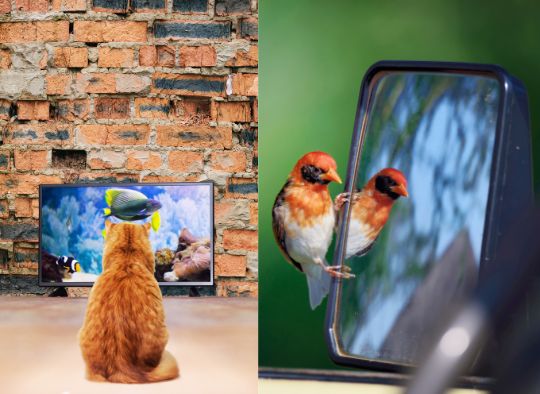
All animals, including reptiles and fish, may be entertained with the chance to do some people or nature watching. You just have to relocate them to a new spot by a window, room, or even outside!
Scent Enrichment
Scent enrichment will be anything that engages their sense of smell. Non-toxic perfumes or herbs are great ways to get most pets to put their nose to work. It’s important to verify that whatever you use is safe for your species of animal. What is safe for one can be fatal for another.
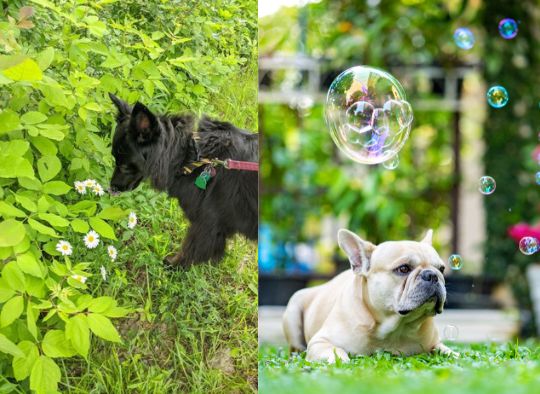
Do things like spray or rub scents on toys and around the house or scented bubbles. You can even use hunting scents like doe or coyote urine around your yard and see how your animals react. When setting up this activity, remember that most animals have a stronger sense of smell than we do. In the matter of scent enrichment- less is more!
Sound Enrichment
As you can probably guess, sound enrichment is using anything that makes noise. You could play different types of music, animal sounds, or nature noises. You could also play different instruments or have fun coming up with weird and funny noises on your own. Aim for that cute head tilt of curiosity if you have a dog or cat! We tend to go to thrift stores and pick up different types of noisemakers in the kids’ section.
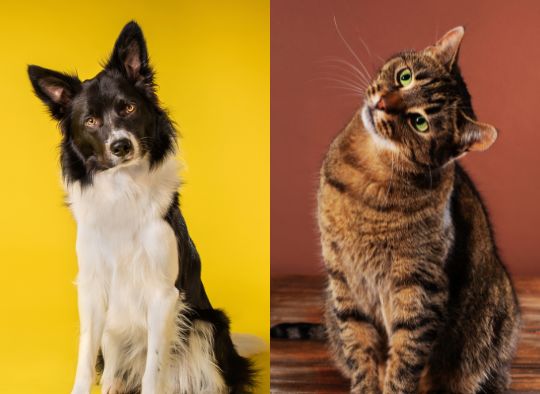
Food Enrichment
This is one of the easiest and overused types of pet enrichment because it simply involves giving your animal a special treat. You may need to adjust your pet’s normal diet that way to make sure that you are keeping your Pet at a Healthy Weight. You can always give low-calorie treats like fruits and veggies if your pet is on a diet. And make sure to always do a quick check before you give new food to make sure that is safe for your animals.
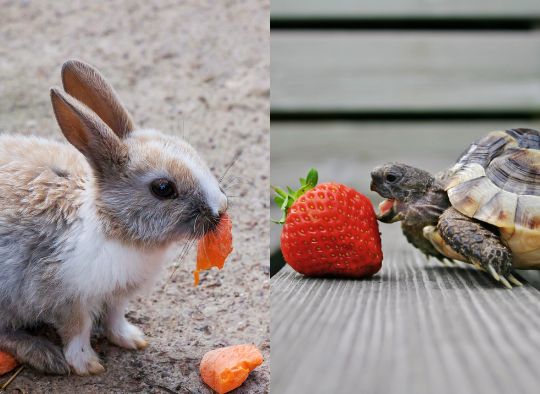
For fun ideas for making different types of food enrichment check out these posts:
For food enrichment, you can also change HOW you give them their food. Instead of simply placing it on a plate or in a bowl, you could scatter it throughout their cage or room. Try putting it on a different surface like a frisbee or inside a box. Changing the manner in which you give your pet its regular meal can also be a form of tactile or touch enrichment as well as mental enrichment.
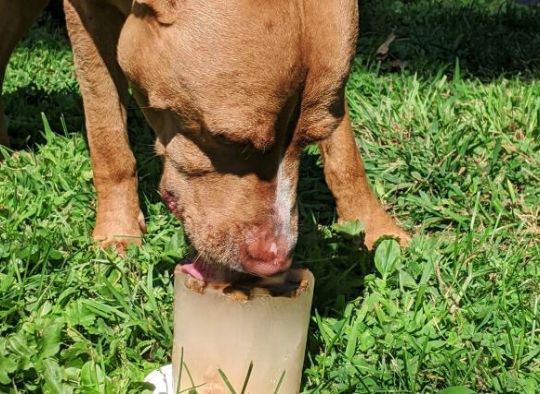
Touch Enrichment
Tactile or touch enrichment will be anything that your pets can touch. Give your animal a chance to experience different texture surfaces that they can walk on, lick, or rub against. This could be new sunning surfaces for reptiles, perches for birds, or scratch posts and beds for the furry members of your family.
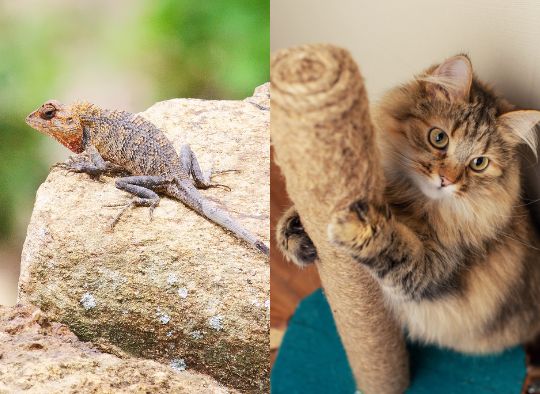
This category of pet enrichment also includes toys! Take your pick from any number of stores or read these posts for ideas on how to make your own:
Mental Enrichment
Mental Enrichment is one of the three big categories. It covers activities that will give your pet’s brain some exercise. This could be behavior training, puzzles, or games.
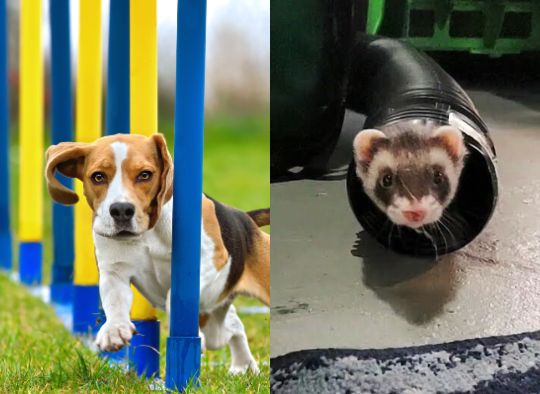
Training is a great way to bond with your pet, though it can be challenging depending on the species. All animals are capable of learning something new, the hard part may be finding what you can use as a reinforcer or treat and deciding what you want to teach them.
Most puzzles found in stores are feeder puzzles because they involve food as the reward when your pet solves them. These types of puzzles will also be considered food and tactile enrichment. Not all puzzles need to involve food though. They can involve toys instead if your pet gets super excited about a particular item.
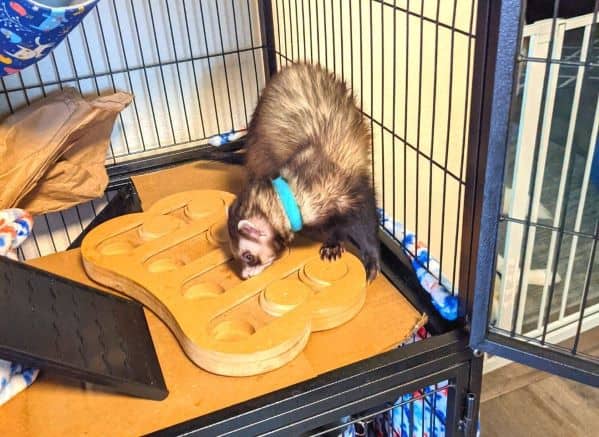
Feeder puzzles for dogs and cats are growing in popularity and are available pretty much everywhere now. With a little creativity, you could make puzzles for other types of animals as well. Here’s an article to help you find and create puzzles for your ferrets.
Another great bonding activity that is fun for you and your pet is games. Play hide and seek, fetch, tug, or come up with something new! For dog owners, we have a list of dog games you can play with your pup and friends.
Social Enrichment
Socialization is the third main pet enrichment category. This is when your pet gets to spend time with other animals or people. Socializing is important because it will help your pets become and/or stay comfortable being handled in a variety of situations.
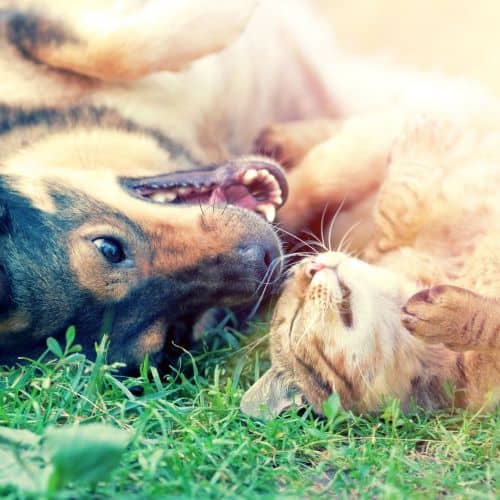
Take your pet on a field trip where they can meet new people or invite a few friends over to say hi to them. Some pets will also love getting a chance to interact with other members of their species. And socialization doesn’t necessarily have to be done face-to-face. A recent research study has shown that birds that FaceTime each other are less lonely.
If your pets enjoy hanging out with ‘friends’, you can even organize a gathering or party if you have the space. My husband and I love throwing dog parties to give us and our pups a chance to hang out with friends. If a dog party sounds like fun, we have a guide with tips to help you throw a safe and memorable dog party.
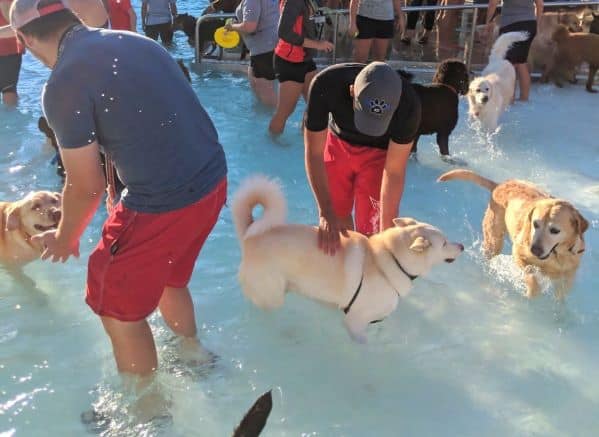
How to Make Sure Your Pet Enrichment is Safe
Keeping your pet mentally and physically stimulated is important, but it’s even more important to make sure that your pet’s enrichment is safe. Remember that every toy or enrichment activity isn’t safe for every animal.
You know your pet best. You’ll have an idea of what you should NOT give your animal and what you think they can safely handle. For example, if they have sensitive stomachs, you will want to avoid too many or certain types of treats. If you know they like to eat things that they shouldn’t, avoid giving them non-food items that they may try to swallow.
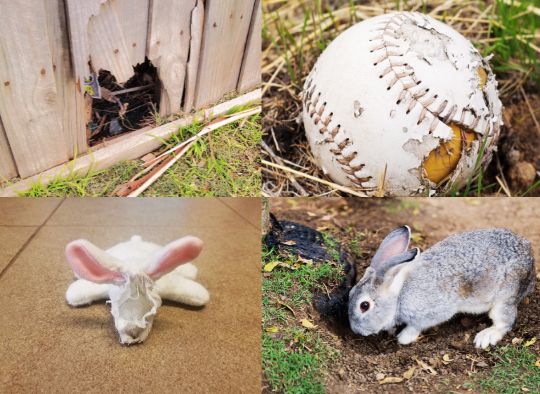
It is also important to do regular safety checks on the toys and furniture that your pets have access to. This includes their crates and the fence in your yard. It’s important to catch potential safety hazards as soon as possible.
Keep an eye out for sharp pieces on items, things they could choke on, and things that they could get stuck in or escape through. This will also help you keep track of items that you may want to replace, make more of, or even stop giving to your pet.
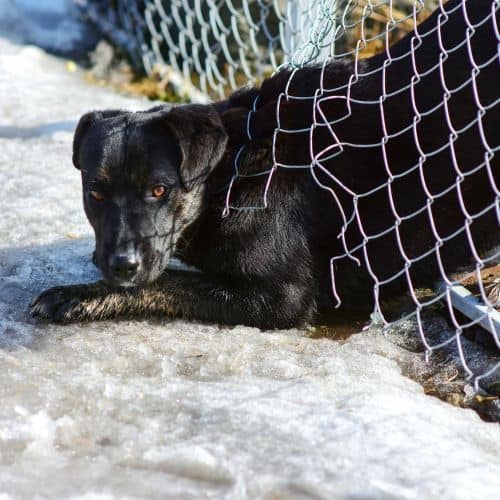
How Do You Know if Your Pet Enrichment is Working?
If you are putting time and effort into giving your pet enrichment, you are probably wondering how to tell it if it is working. To do that, you will have to answer two separate questions; you will need to know if your pet is interacting with the enrichment and if they like it.
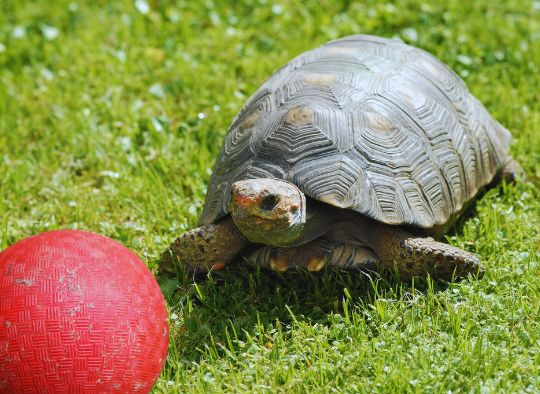
The first way to tell if your pet enrichment is doing its job is if your animal is interacting with it. This does NOT mean using the item the way you intended. They could chew on it, lick it, pee on it, knock and drag it around, or destroy it.
Any of these behaviors mean that your pet used it in some way, which is a success though it can be frustrating. One of the times that I made homemade treats for my dogs, they ended up having more fun throwing them around than eating them.
The second way to tell if your enrichment is successful is whether your animal liked it or if they experienced positive emotions while using it. You want your pet to be happy, interested, or curious about the object or activity you’ve set up for them for it to be a success.
This is important because your pet’s enrichment could cause your pet to become overly frustrated, anxious, scared, or angry. You may notice your animal hiding from it, trying to fight it, or displaying any number of fearful or aggressive behaviors. Even though your pet interacted it with- they didn’t like it. In this case, the enrichment was not a success.
Even if your pet enrichment is not a success the first time you give it, you might not want to give up on it right away unless it is a safety issue. Remember that with new things, it may take a few tries before they feel comfortable enough to interact with it. If they get frustrated, they may just need a little help figuring out what to do, especially with puzzles and games.
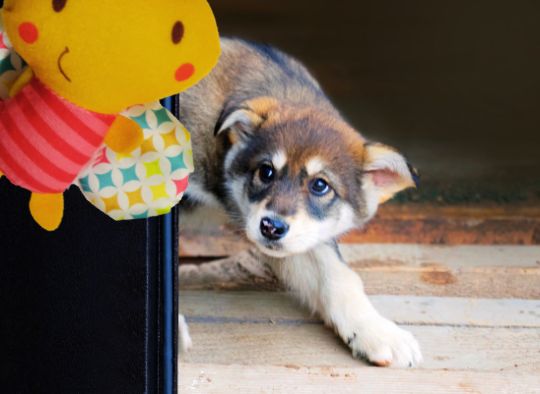
No matter what happens, it is always good and exciting to let your pets try new things. Just like us, sometimes they might not be in the mood to try something different. If your animal doesn’t appear to care for the activity or toy, you can still try it out a few more times. If they still don’t like it or it’s too scary, take it out of rotation. You can always try it again in the future!
Make Giving Your Pet Enrichment a Habit!
Enrichment is important for your pet’s mental and physical health. Some animals will interact and play with what you give them more than others, but it is important to at least give them the opportunity. We all know how boring sitting at home is and what a huge difference a change in our daily environment can be.
Let it be a new toy, a change of scenery, or a new friend, your pet will be healthier and happier with additional stimulation. Creating enrichment and playing with our pets is fun for us humans too. The challenge of coming up with new ideas and taking the time to strengthen the bond with our fur kids is a great stress reliever and activity that your whole family will love.
Pin For Later:
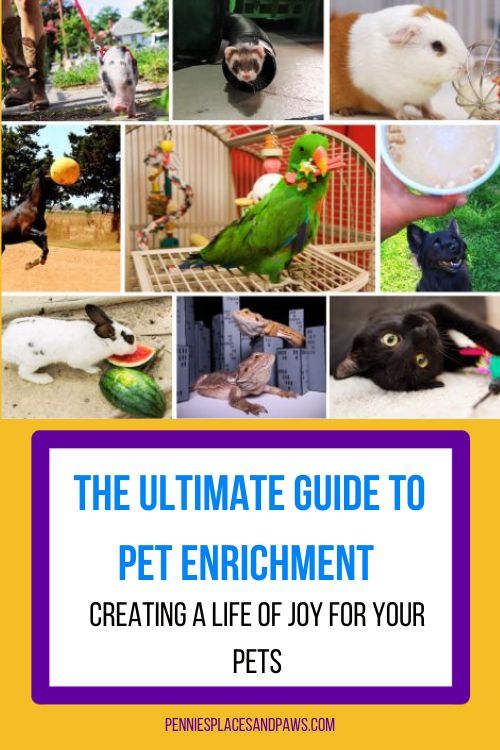
Amazon and the Amazon logo are trademarks of Amazon.com, Inc, or its affiliates.

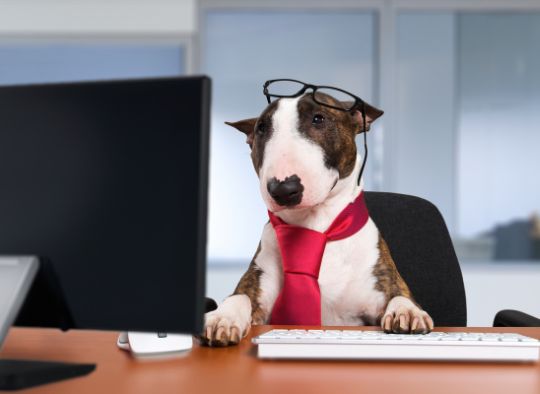

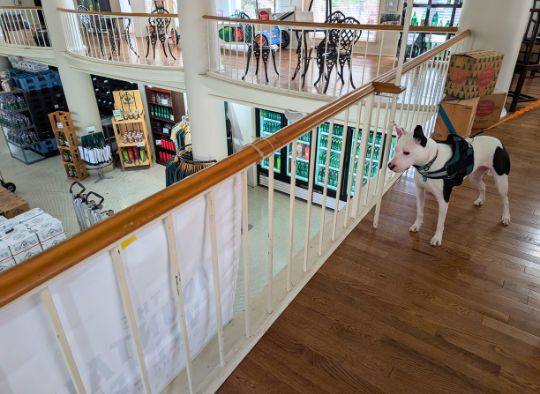
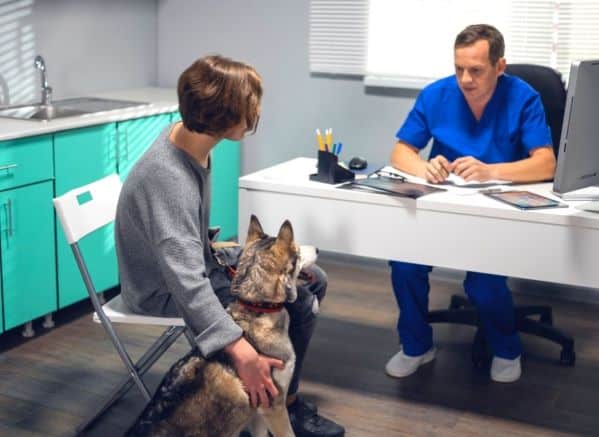


I bought a bunch of new toys to keep our kitty entertained after our pooch passed. Most of it she could care less about and had no interest in. Her favorite toy, the one she played with vigorously for the remainder of her life was a silly banana. It was a joy to watch her throw it in the air and tackle it.
How cute! I have bought many toys that get ignored LOL
Love this! So important to keep our furbabies happy and stimulated. There’s a dog food commercial that says, “There’s no such thing as a bad dog, just a bored one” or something like that, and it’s so true. Bored dogs act out just like bored kids do. Thanks for sharing these great ideas 😊
Yes!!! My favorite saying is a tired dog is a good dog. Similar to kids but there’s that line of too tired! LOL
It is so important that we enrich our furry loves the same way we would with ourselves and our other kids.
I love this so much!!!!❤️ So true! I’m definitely using some of these tips with my Pom. Thanks so much for sharing!
Interesting read. Pets are so like children. I am not a pet owner but I can relate to the owner/fur baby relationship. Thanks for sharing.
I’ve never even thought about this! Great information, and information I can use when I get a pet!
Interesting! It’s easy to forget that animals need enrichment, too. Nice read!
Thank you!
I hadn’t thought about how pets are enriched, but I know our dog loves a change of scenery and to explore! Makes sense! We do too 🙂
🙂
We have in the past few years after learning about the awful products used in some pet treats and toys gone on a strong initiative to make sure the stuff we bring in for them is safe and encourages great health.
It is definitely a part time job now, especially with treats!
I love your advice about not giving your animals just anything. We need first to do the research and make sure it is not bad for them.
And it’s different for every dog! We have toys that can only be played with when one dog is not around. So it’s a very special treat for the ones that can get it!
These are great ideas! I loved buying little toys for our dog.
It’s so much fun watching them play!
I completely agree with this! I find it absolutely awesome that the zoos offer their animals enrichment for mental health. We may have to put in a little more effort with our 3 elderly cats… but they seem to find plenty to keep them busy and active! LOL
I find that I don’t do nearly as much with my dogs as I did with the animals I work with at the zoo. Definitely working on changing that! 🙂
Never even considered this! Interesting!
Great post! It’s been so great working from home because my dog gets so much more enrichment in going in and out of the dog door to chase squirrels and play in the snow. His life has definitely improved! His favorite toy is a light up ball of the kids that he tosses up in the air to get it to light up. It’s pretty entertaining to watch. He’s not half as interested in any of his own toys. 🙂
Cute! I have gotten some kid toys that the dogs love but don’t destroy 🙂
I know all about the enrichment piece for my dog. We have a GSD so I am always worried it is not enough. He needs to work!
It can be hard keeping them busy!
It’s funny. I have three cats and each prefers a different type of enrichment. One loves little toy mice–we find them all over the house, even carefully placed in his food bowl. Another likes anything that hangs, and the third likes nothing more than snuggling on a warm lap!
Such different likes and personalities!
My old girl loves music, if Alexa understood barking, music would be on all the time LOL
That is so adorable! 😍
So glad to know we do all of the enrichment activities listed here with our pet, without really knowing it was called enrichment. Thank you, for the great post!
That’s awesome! and Thank you 🙂
I remember first hearing about enrichment on a documentary I saw, years ago, about low-budget zoos in poor countries. The elephants were swinging their heads back and forth rhythmically throughout the day, and the narrator explained that was a sign that they weren’t being mentally stimulated enough.
Boredom isn’t good for anyone- including us humans!
I love these ideas! I create enrichment for my three cats in the backyard garden. I grow herbs they like, such as catmint, and create spaces for them to hide and sleep and play. They love the garden.